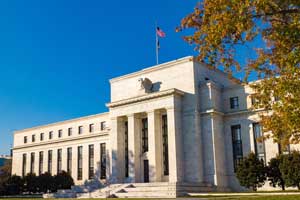Why the Federal Reserve Was Founded

This is the first of a three-part series discussing the founding of the Federal Reserve System. Today’s post examines why the Fed was established.
When the Federal Reserve System was founded more than 100 years ago, one of the major flashpoints was the decision to give Missouri two Reserve banks: one in St. Louis and one in Kansas City. A research article published in the Review examined why this occurred and showed that both cities were reasonable choices.
Before jumping into the reasons behind the decision, it’s important to understand why the Fed was founded in the first place. St. Louis Fed Vice President and Deputy Director of Research David Wheelock, who authored the article, explained that the Fed was founded to address perceived flaws in the nation’s banking system.
The Correspondent System of Banking
One issue stemmed from the structure of reserve requirements imposed on national banks. Wheelock explained that these banks were required to hold cash reserves equal to a certain percentage of their deposit liabilities. The ways this could be done depended on location:
- National banks in central reserve cities (at the time, New York, Chicago and St. Louis) needed to keep the cash in their vaults.
- National banks in designated reserve cities could keep the cash in their vaults or deposit a portion of it with national banks in central reserve cities.
- National banks in all other towns and cities could keep the cash in their vaults or deposit a portion of it with national banks in reserve or central reserve cities.
He pointed out that “because those deposits usually bore interest, many banks preferred to hold surplus funds with correspondents rather than as vault cash.
Issues with This System
Wheelock noted a few issues with this approach. One was that the system was more vulnerable to panics. Also, some of the banks holding cash for other banks lent these deposits for purposes of buying and holding stocks. As Wheelock noted: “This practice exposed the banking system to instability in equity markets.”
Such issues led to calls for reform, and Congress established the National Monetary Commission in 1908 to study the banking system and propose reforms. Wheelock wrote: “Ultimately, a consensus emerged around a plan to establish a system of bankers’ banks that would hold the reserves of their member banks, lend to them on the basis of short-term commercial and agricultural loans, supply a new currency and operate the payments system. That system was embodied in the Federal Reserve Act, which called for the establishment of eight to twelve Federal Reserve Districts and Reserve Banks and a government-appointed Federal Reserve Board to oversee the System.”
The Federal Reserve Act may have set forth a plan, but it provided little guidance about how to create this system, including where Reserve banks should be located and how boundary lines should be drawn. The next post in this series will examine why the Federal Reserve System was set up in the manner it was.
Follow the Series
- Why the Federal Reserve Was Founded
- How the Federal Reserve System Was Formed
- Why Missouri Got Two Federal Reserve Banks
Additional Resources
Citation
ldquoWhy the Federal Reserve Was Founded,rdquo St. Louis Fed On the Economy, July 25, 2016.
This blog offers commentary, analysis and data from our economists and experts. Views expressed are not necessarily those of the St. Louis Fed or Federal Reserve System.
Email Us
All other blog-related questions

